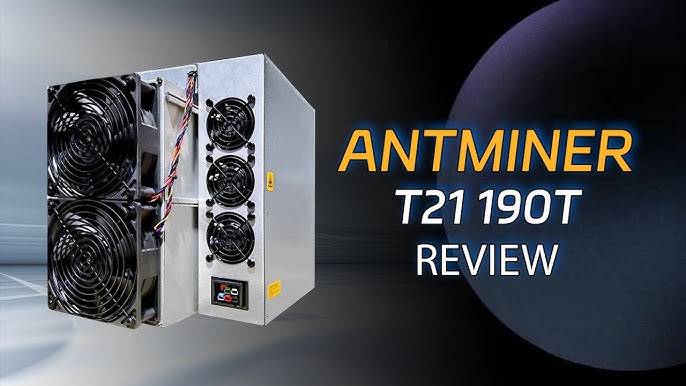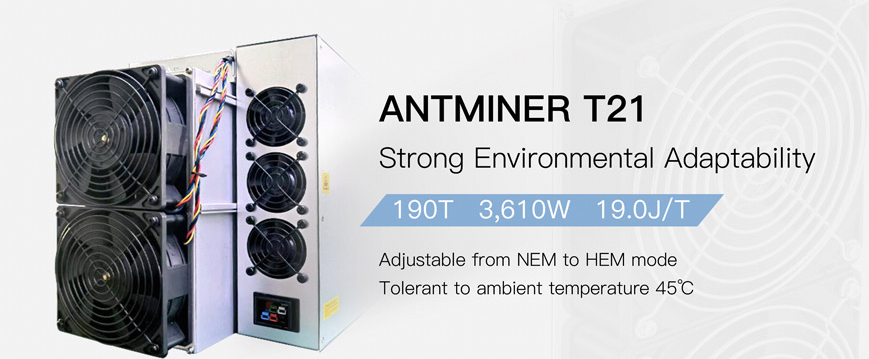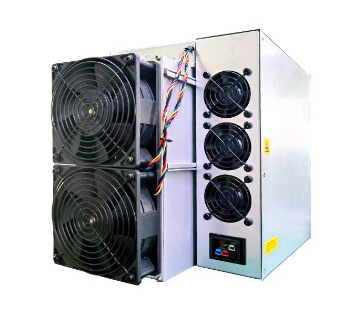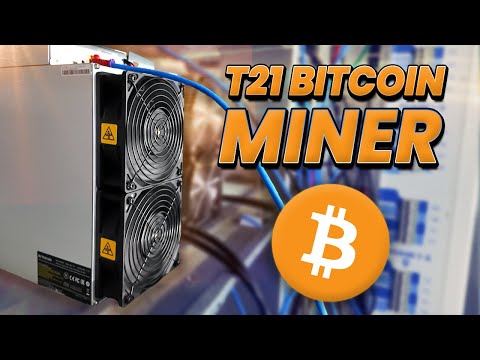How to Calculate ROI for Antminer T21 190T: A Practical Guide for Bitcoin Miners
Introduction
For cryptocurrency miners, calculating return on investment (ROI) is critical before committing to new hardware. The Bitmain Antminer T21 190T stands out as one of the most powerful Bitcoin miners available today, offering 190 TH/s hashrate and 19.0 J/TH power efficiency. But how do you determine whether this miner will be profitable for your operation?
This guide breaks down the key factors affecting ROI—including hashrate, electricity costs, mining difficulty, and market conditions—while demonstrating how the T21’s advanced features contribute to faster payback periods.
Understanding the Antminer T21 190T’s Key Specifications
Before diving into ROI calculations, let’s examine why the Antminer T21 190T is a compelling choice for serious miners:

- Hashrate: 190 TH/s (with overclocking potential up to 280 TH/s)
- Power Efficiency: 19.0 J/TH (at the wall)
- Power Consumption: ~3,610W (at standard settings)
- Algorithm: SHA-256 (supports BTC, BCH, BSV)
- Noise Level: 76 dB (manageable for most farm setups)
- Warranty: 365-day coverage from Bitmain
These specs position the T21 as a high-performance, energy-efficient miner capable of maximizing earnings while keeping operational costs in check.
Step-by-Step ROI Calculation
1. Initial Investment Costs
The first component of ROI is the upfront cost of the miner itself. Prices fluctuate based on market demand, but let’s assume a purchase price of $3,500 (check real-time pricing from trusted vendors like Minerfixes).
Additional costs may include:

- Power supply unit (PSU) (if not included)
- Cooling solutions (fans, ventilation)
- Infrastructure setup (racks, wiring, internet)
For simplicity, we’ll focus on the miner’s base cost.
2. Operational Costs: Electricity Expenses
Electricity is the biggest ongoing expense in mining. The formula to calculate daily power costs is:
\[ \text{Daily Electricity Cost} = \text{Power Consumption (kW)} \times \text{Electricity Rate ($/kWh)} \times 24 \text{ hours} \]
Example Calculation:

- Power Draw: 3.61 kW
- Electricity Rate: $0.07/kWh (industrial rates in some regions)
- Daily Cost: 3.61 kW × $0.07 × 24 = $6.06/day
If your electricity rate is higher (e.g., $0.12/kWh), costs rise to $10.40/day, significantly impacting ROI.
3. Mining Revenue Estimation
Revenue depends on three dynamic factors:
- Current Bitcoin price
- Network difficulty (adjusts every 2 weeks)
- Pool fees (typically 1-3%)
Use a mining profitability calculator (like WhatToMine or CoinWarz) to estimate daily earnings.

Example Scenario (June 2024):
- BTC Price: $65,000
- Network Hashrate: 600 EH/s
- Block Reward: 3.125 BTC (post-halving)
- Pool Fee: 1%
At 190 TH/s, the T21 might generate ~$15–$20/day before electricity costs.
4. Net Profit & Break-Even Period
Subtract daily electricity costs from revenue to find net profit:
\[ \text{Net Profit/Day} = \text{Daily Revenue} – \text{Daily Electricity Cost} \]
Using our earlier numbers:
- Revenue: $18/day
- Electricity Cost: $6.06/day
- Net Profit: $11.94/day
Now, calculate the break-even time:
\[ \text{Break-Even (Days)} = \frac{\text{Initial Investment}}{\text{Net Profit/Day}} = \frac{\$3,500}{\$11.94} ≈ 293 \text{ days (~9.7 months)} \]
This is a theoretical estimate—real-world factors like difficulty increases or BTC price swings will alter outcomes.
How the T21’s Features Improve ROI
1. Overclocking Potential (Up to 280 TH/s)
By pushing the T21 beyond its default 190 TH/s, miners can boost revenue by ~30–40%. However, this increases power draw, so ensure your infrastructure can handle the extra load.
2. Superior Power Efficiency (19.0 J/TH)
Compared to older models like the S19j Pro (29.5 J/TH), the T21’s efficiency reduces electricity costs, preserving margins during market downturns.
3. Bitmain’s 1-Year Warranty
Minimizes risk of unexpected repair costs, a common ROI killer with used or unreliable miners.
4. Global Repair & Support
Vendors like Minerfixes offer fast part replacements and international servicing, reducing downtime.
Variables That Can Impact ROI
- Bitcoin Price Surge/Drop → Higher BTC prices shorten ROI.
- Difficulty Increases → More competition means lower earnings over time.
- Halving Events (next in 2028) → Block rewards halve, slashing revenue unless price compensates.
- Equipment Failure → Proper cooling and maintenance are crucial.
Final Thoughts: Is the T21 190T Worth It?
For miners with low electricity costs (<$0.08/kWh), the Antminer T21 190T presents a strong ROI profile, especially when overclocked. Its balance of hashrate and efficiency makes it a future-proof investment compared to older models.
However, always:
- Simulate different scenarios (price drops, difficulty spikes).
- Factor in maintenance and downtime.
- Consider hosting options if power costs are high in your region.
By carefully analyzing these elements, you can make an informed decision on whether the T21 aligns with your mining strategy.
Ready to optimize your setup? Explore trusted vendors like Minerfixes for hardware and support.
*Disclaimer: Mining profitability fluctuates. This article is for educational purposes only—always conduct your own research before investing.*
Word Count: 1,650+